The human potential will always be a source of extreme amazement for me. Last year Alexey Molchanov dove down to 130 m and back on a single breath. And in 2013 Natalia Molchanova held her breath underwater for 9 minutes. The combination of depth and breath-hold constitute today’s world of competitive freediving. But the sport is much more than competition. In freediving, the diver sheds most of their gear, using only what is absolutely necessary to survive, to submerge themselves in a condition that allows for deep, deep introspection and the opportunity to challenge oneself’s limits. The styles of freediving vary; some don’t use fins, others don’t even go deep. Yet the one thing that they all have in common is the ability to hold the breath.
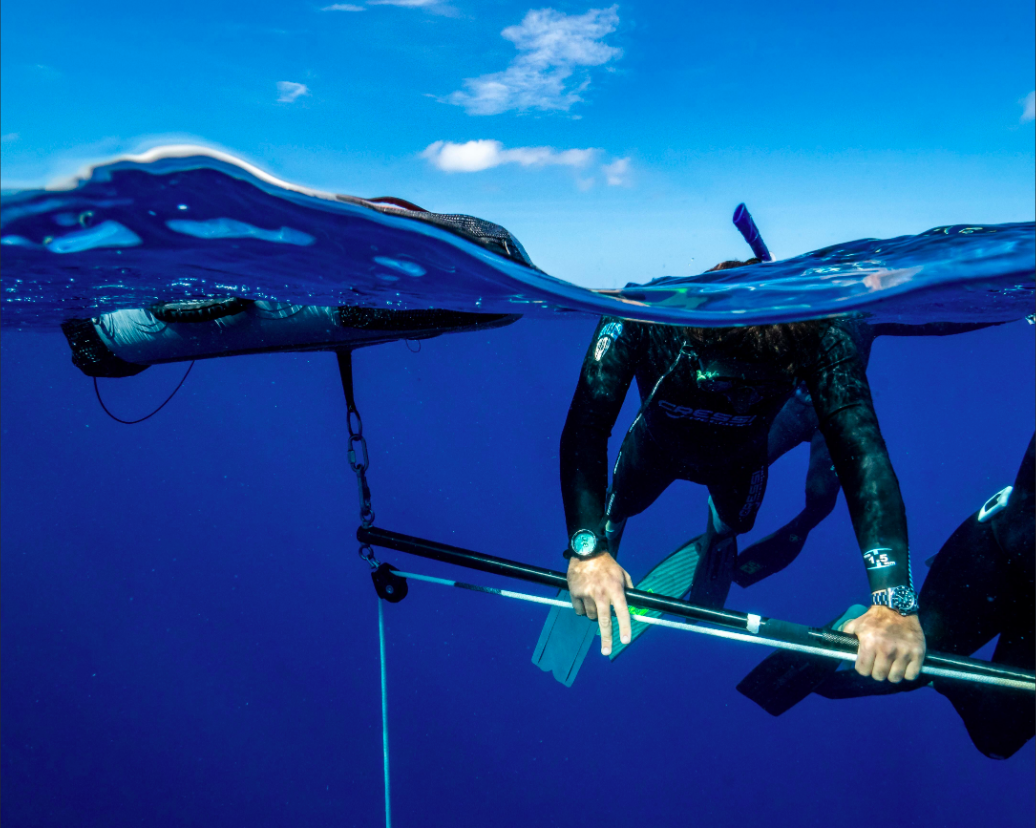
The art of breath-hold has been developing for years. In some cultures, fishers have been able to go underwater and stay down for a significant period of time in order to hunt and collect precious resources from the sea. Now that this practice has evolved into a sport, on par with its emerging scientific interest, the discipline of freediving is en route to a fantastic journey of human discovery. With exciting times ahead of this evolution, the activity strikes me as a way to encourage people to get closer to the water which can be far more accessible than regular scuba diving. Not only that, but learning about the constantly growing safety techniques of diving on a breath could open up important dialogues with communities that still depend on this practice for subsistence.
Therefore, parting from my merely mediocre knowledge on the subject, I was eager to get some freediving training. I approached Performance Freediving International (PFI), a renowned organization that is branching out to extend their education globally. They have been involved in developing a comprehensive safety-based methodology to help their students perform to their maximum standards. And one of the coolest things about PFI is that they train movie stars for underwater stunts! Currently they are working with James Cameron’s Avatar crew on their upcoming sequels. They also hold a mini video-series called Waterborn where you can get an idea of the type of work they do. I was lucky to be hosted by PFI in a week-long training camp in beautiful Cayman.

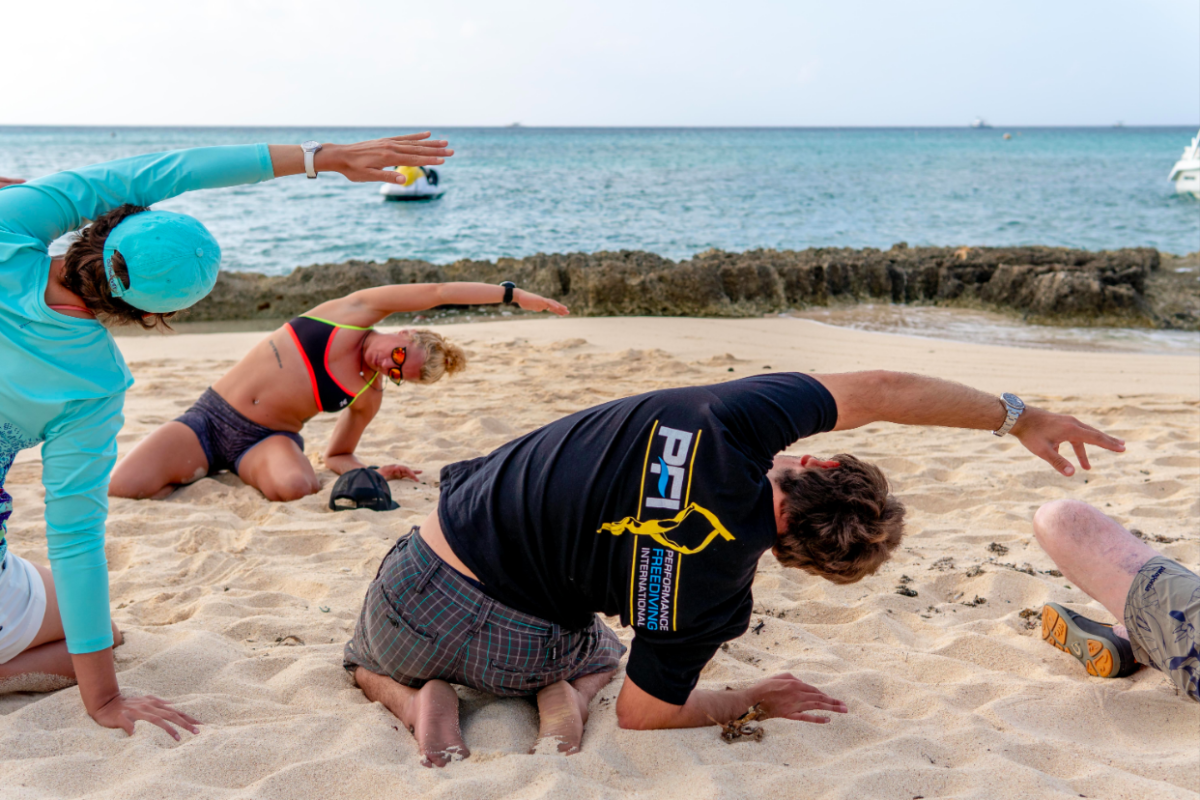
I was hooked from day one. Physics, physiology, psychology, recreation, nutrition, ethics, safety, equipment, theory and practice all constitute part of the PFI program. From discovering different styles of equalizing to understanding the various components of breathing, the training boosted my confidence in the water. Yet what is more surprising is how much you can improve with small tweaks here and there in your technique. Pushing my breath-hold to 4 and-a-half minutes (only a minute and-a-half to go to sing Queen’s entire Bohemian Rhapsody on breath-hold!) and my immersions to almost 30 m in only a week was just mind-blowing. But one of the most enjoyable parts of my experience was just to go down and shed most of my gear, being utterly silent and taking in the vastness of the ocean. In this state your interaction with animals becomes so different. Some are actually quite curious and for some reason end up showing up.
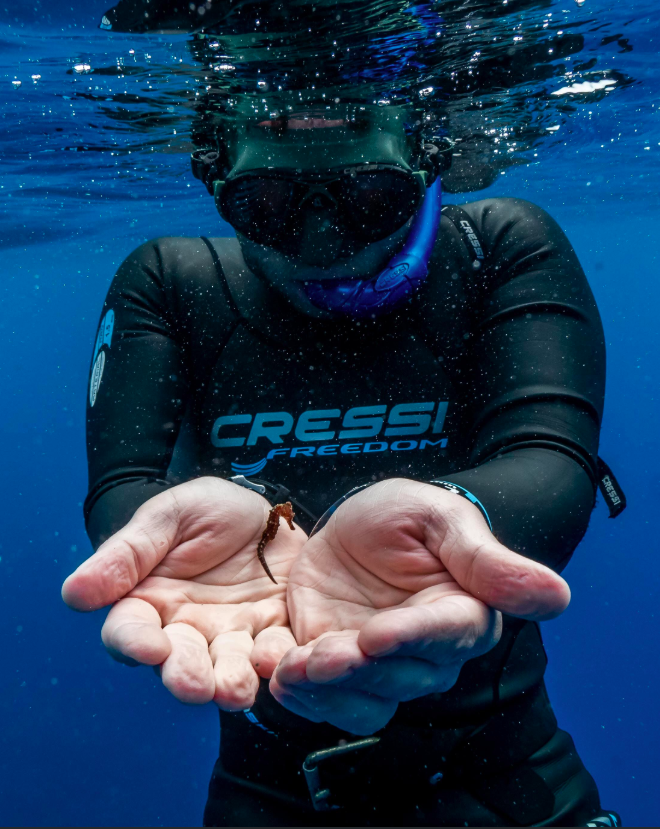
Needless to say, rich knowledge and skill acquisition aside, the courses were challenging. There were physical demands, yes, but for me the biggest one of all was the mental aspect. Introducing your body to conditions it has never before experienced creates an uproar in your system. Your body is so smart that it fights back to stay alive, activating a series of alarms. Thorough studies of these alarms have paved the way to the techniques that are inherent for the safety of freediving. One of the first triggers that your body creates is the mental detonation of thoughts that will definitely cause stress, discomfort and desperation which we are typically not accustomed to managing. But knowing that these thoughts will come and that suppressing the urge to frantically seek the surface is actually key to staying alive. It becomes so rewarding when you learn to read your body and how to react appropriately. There is nothing more savory and oddly relaxing as going back to catch that first gulp of fresh air after a battle against the mind.
So after experiencing this fight a couple of times it became evident why the number one safety rule for diving is to go with a buddy. From day one the course put us in rescue scenarios where we strived to develop muscle memories to respond to emergencies. We practiced how to identify an unconscious diver, how to assist the diver to the surface, protect the airway and perform basic life-support responses. There is also something very reassuring about meeting a buddy half-way when you ascend to the surface.
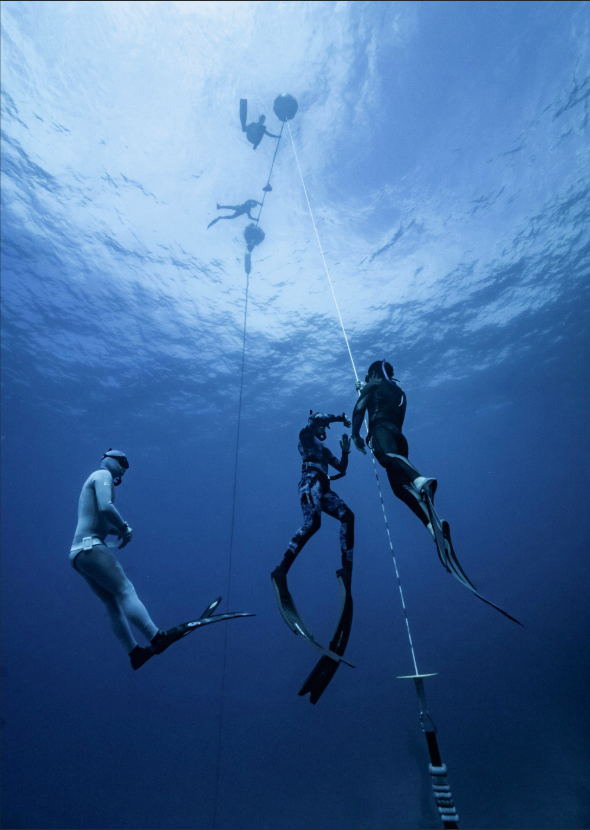
And as a a special treat, I got to learn a little more about setting up a freediving rig for competition, the numerous roles of safety divers, the importance of teamwork and the basics of competition layout.
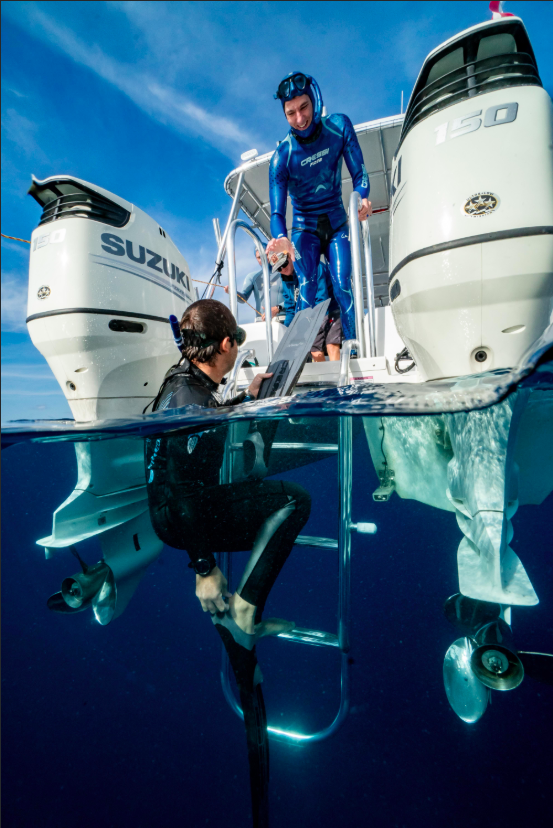
I cannot wait to take my learnings back home and continue exploring the underwater world from such a fresh and exciting perspective.
A huge thanks to PFI for hosting me, and a very special thanks to Cressi for sponsoring my gear and Diver’s Supply for receiving me in Cayman.
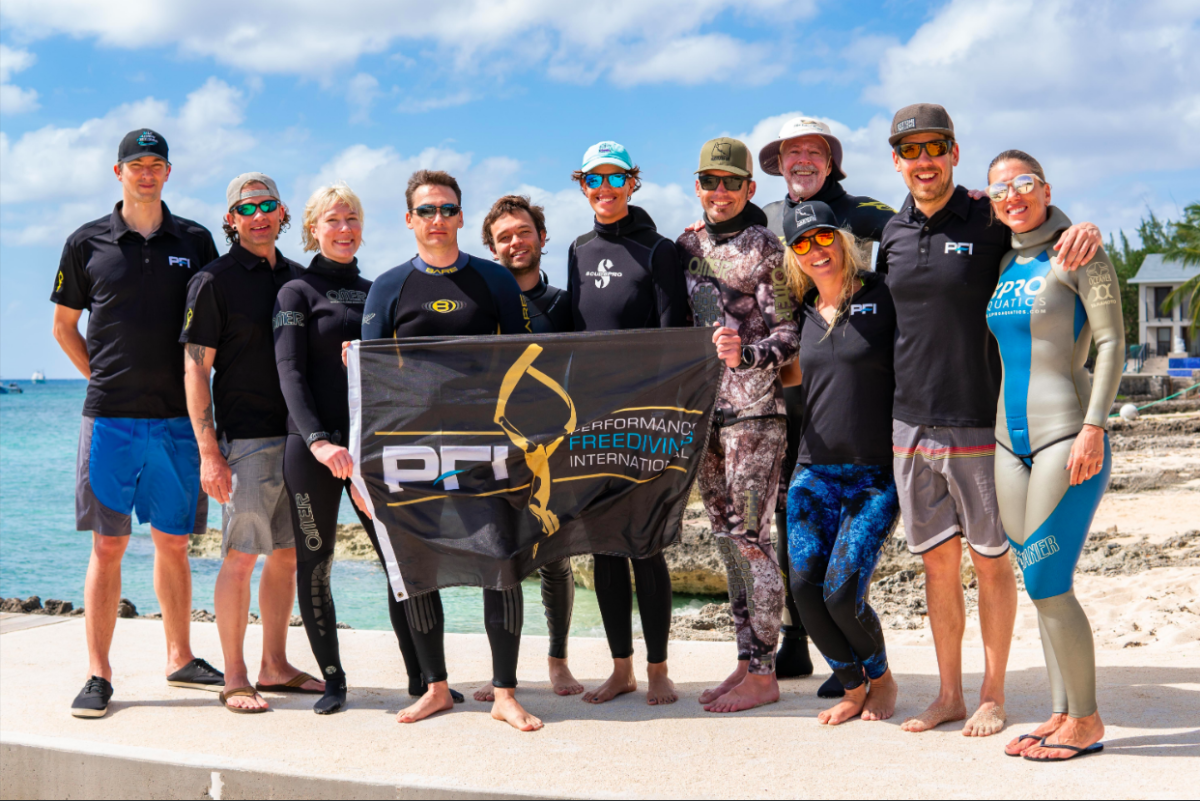
Respira, purga, inhalación pico, sumerge.
El potencial humano siempre será una fuente de gran asombro para mí. El año pasado Alexey Molchanov bajó a 130 m en un solo respiro. Y en 2013 Natalia Molchanova aguantó la respiración bajo el agua durante 9 minutos. La combinación de profundidad y aguantarse la respiración constituye el mundo de la apnea competitiva de hoy. Pero el deporte es mucho más que una competencia. En la apnea, el buzo deja atrás casi todo su equipo, llevándose consigo sólo lo que se considera absolutamente necesario para sobrevivir, y así entrar en condiciones que permiten una introspección profunda y la oportunidad de desafiar los límites de uno mismo. Los estilos de apnea varían; algunos no usan aletas, otros ni siquiera van a profundidad. Pero lo que todos tienen en común es que en cada disciplina se requiere de la habilidad para aguantar la respiración.

Este arte ha sido desarrollado por años. En algunas culturas, pescadores han sido capaces de permanecer bajo el agua por tiempos prolongados para cazar y recolectar recursos preciados del mar. Ahora que esta practica ha evolucionado en un deporte, a la par de su emergente interés científico, la apnea está encaminada en un viaje fantástico de descubrimiento humano. La actividad se me presenta como una manera de alentar a la gente a acercarse más al agua, de forma mucho más accesible que el buceo convencional. No solo eso, sino que también el conocimiento sobre nuevas técnicas de seguridad podrían abrir diálogos de discusión importantes entre comunidades que dependen de esta práctica para subsistir.
Así, partiendo de un conocimiento apenas mediocre sobre el tema, me volví ansioso de buscar entrenamiento de apnea. Me acerqué a Performance Freediving International (PFI), una organización reconocida por su material educativo basado en seguridad que ayuda a sus estudiantes a rendir al máximo. Una de las cosas más emocionantes de PFI es que entrenan actores para escenas acuáticas. En este momento se encuentran trabajando con el personal de las secuelas de Avatar del director James Cameron. También tienen unas pequeñas series en internet llamadas Waterborn donde se puede observar el tipo de trabajo que hacen en la industria. Fui afortunado de atender un campamento de una semana con PFI en las hermosas costas de la isla Caimán.


Desde el primer día estuve enganchado. Física, fisiología, psicología, recreación, nutrición, ética, seguridad, equipo, teoría y práctica son todos componentes del programa de estudios de PFI. Desde aprender los diferentes estilos de compensar hasta los componentes de la respiración, el entrenamiento realmente impulsó mi confianza en el agua. Pero lo más sorprendente es cuánto puedes mejorar con pequeñas modificaciones en la técnica. Llevar mi aguante a 4 minutos y medio (tan sólo minuto y medio para poder cantar Bohemian Rhapsody de Queen mientras aguanto la respiración) y mis inmersiones a casi 30 m en el transcurso de una semana fue impactante. Sin embargo una de los cosas que más se disfrutan de esta experiencia es simplemente entrar al agua y suspenderse silenciosamente en la inmensidad del océano. En este estado la interacción con la fauna se vuelve muy diferente. Algunos de hecho son curiosos y se llegan a acercar.

Dejando atrás la adquisición de conocimiento y habilidades atrás, no hace falta decir que los cursos eran demandantes. Los retos eran tanto físicos como mentales. Someter a tu cuerpo a condiciones que nunca ha experimentado crea una detonación en tu sistema. El cuerpo es tan inteligente que comienza a mandar señales y luchar para mantenerse vivo; condiciones que han permitido desarrollar las técnicas de seguridad que son esenciales para la práctica de la apnea. Una de las primeras reacciones del cuerpo es incitar pensamientos que causarán estrés, incomodidad y desesperación, sensaciones que no acostumbramos a manejar. Pero anticipando estos pensamientos y sabiendo que suprimir la tentación de regresar a la superficie frenéticamente se vuelve realmente clave para sobrevivir. Es muy enriquecedor cuando aprendes a leer tu cuerpo y cómo reaccionar adecuadamente. No hay nada más sabroso y curiosamente relajante que ese primer respiro de regreso en la superficie después de haber luchado contra los trucos de la mente.
Así que viviendo esta lucha unas cuantas veces se vuelve evidente por qué la regla número uno de la apnea es el no hacerlo solo. Desde el primer día el curso nos pone en situaciones donde simulamos rescates para desarrollar la memoria muscular necesaria para responder a emergencias. Practicamos como identificar cuando un apneísta está inconsciente, cómo asistir a la persona a la superficie y proteger los ductos de respiración del cuerpo para responder adecuadamente si llegara a requerirse una resucitación.

Como trato especial también pude aprender un poco más de cómo preparar las estaciones de competencia, las boyas y de los numerosos papeles que juegan los buzos de seguridad.

I cannot wait to take my learnings back home and continue exploring the underwater world from such a fresh and exciting perspective.
No puedo esperar para llevarme lo que aprendí a casa y continuar explorando el mundo subacuático desde una perspectiva tan fresca y emocionante.
Un agradecimiento enorme a PFI por haberme recibido, pero también a Cressi y Diver’s Supply por patrocinar mi equipo y darme la bienvenida a la isla Caimán
